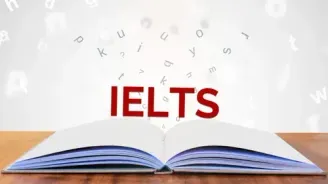Life Casting And Art Reading Answer Passage
Life Casting And Art Reading Answer Passage
Julian Bames explores the questions posed by Life-Casts, an exhibition of plaster moulds of living people and objects which were originally used for scientific purposes.
Paragraph A. Art changes over time and our idea of what art is changing too. For example, objects originally intended for devotional, ritualistic, or recreational purposes may be recategorised as art by members of other later civilisations, such as our own, which no longer respond to these purposes.
Paragraph B. What also happens is that techniques and crafts which would have been judged inartistic at the time they were used are reassessed. Life-casting is an interesting example of this. It involved making a plaster mould of a living person or thing. This was complex, technical work, as Benjamin Robert Haydon discovered when he poured 250 litres of plaster over his human model and nearly killed him. At the time, the casts were used for medical research, and consequently, in the nineteenth century, life-casting was considered inferior to sculpture in the same way that, more recently, photography was thought to be a lesser art than painting. Both were viewed as unacceptable shortcuts by the ’senior 1 arts. Their virtues of speed and unwavering realism also implied their limitations; they left little or no room for the imagination.
Paragraph C. For many, life-casting was an insult to the sculptor’s creative genius. In an infamous lawsuit of 1834, a moulder whose mask of the dying French emperor Napoleon had been reproduced and sold without his permission was judged to have no rights to the image. In other words, he was specifically held not to be an artist. This judgment reflects the view of established members of the nineteenth-century art world, such as Rodin, who commented that life-casting ‘happens fast,but it doesn’t make Art’. Some even feared that ‘if too much nature was allowed in, it would lead Art away from its proper course of the Ideal.
Paragraph D. The painter Gauguin, at the end of the nineteenth century, worried about future developments in photography. If ever the process went into colour, what painter would labour away at a likeness with a brush made from squirrel-tail? But painting has proved robust. Photography has changed it, of course, just as the novel had to reassess the narrative after the arrival of the cinema. But, the gap between the senior and junior arts was always narrower than the traditionalists implied. Painters have always used technical back-up such as studio assistants to do the boring bits, while apparently, lesser crafts involve great skill, thought, preparation, and, depending on how we define it, imagination.
Paragraph E. Time changes our view in another way, too. Each new movement implies a reassessment of what has gone before. What is done now alters what was done before? In some cases, this is merely self-serving, with the new art using the old to justify itself. It seems to be saying, look at how all of that points to this! Aren’t we clever to be the culmination of all that has gone before? But usually, it is a matter of re-alerting the sensibility, reminding us not to take things for granted. Take, for example, the cast of the hand of a giant from a circus, made by an anonymous artist around 1889, an item that would now sit happily in any commercial or public gallery. The most significant impact of this piece is on the eye, in the contradiction between unexpected size and verisimilitude. Next, the human element kicks in. You note that the nails are dirt-encrusted unless this is the caster’s decorative addition, and the fingertips extend far beyond them. Then, you take in the element of choice, arrangement, and art, if you like, in the neat, pleated, buttoned sleeve-end that gives the item balance and variation of texture. This is just a moulded hand, yet the part stands utterly for the whole. It reminds us slyly, poignantly, of the full-size original.
Paragraph F. But is it art? And, if so, why? These are old, tediously repeated questions to which artists have often responded, ‘It is an art because I am an artist, and therefore what I do is art. However, what doesn’t work for literature works much better for artworks of art to float free of their creators’ intentions. Over time the “reader” does become more powerful. Few of us can look at a medieval altarpiece as its painter intended. We believe too little and aesthetically know too much, so we recreate and find new fields of pleasure in the work. Equally, the lack of artistic intention of Paul Richer and other forgotten craftsmen who brushed oil onto flesh, who moulded, cast, and decorated in the nineteenth century is now irrelevant. What counts is the surviving object and our response to it. The tests are simple: does it interest the eye, excite the brain, move the mind to reflection, and involve the heart? It may, to use the old dichotomy, be beautiful but it is rarely true to any significant depth. One of the constant pleasures of art is its ability to come at us from an unexpected angle and stop us short in wonder.
Let’s explore the questions and answers of the Life Casting And Art reading answer passage.
Life Casting And Art Reading Answers with Sample Questions
Have you read the passage? Now, take the test and find Life Casting And Art Reading answers! Try to answer these questions by yourself before you sneak a peek at the answers given below.
Check Out Top 40+ IELTS Reading Practice Test Questions with Answers
Below are some top 40+ free IELTS Reading Practice test online questions with detailed answers to enhance your IELTS preparation online. We have provided sample passages for each test type for your reference.
- What Is Exploration Reading Answers
- Effects Of Noise Reading Answers
- The Discovery Of Baby Mammoth Reading Answers
- The Dead Sea Scrolls Reading Answers
- The Ring-Tailed Lemur Reading Answers
- Why We Need To Protect Polar Bears Reading Answers
- Nutmeg A Valuable Spice Reading Answers
- What Is Meaning Reading Answers
- Cutty Sark Reading Answers
- The Step Pyramid Of Djoser Reading Answers
- South Pole Adventurer Reading Answers
- The Future Of Work Reading Answers
- Ambergris Reading Answers
- Trees In Trouble Reading Answers
- Could Urban Engineers Learn From Dance Reading Answers
- The Flavour Of Pleasure Reading Answers
- The Value Of A College Degree Reading Answers
- Why You Should Delegate Tasks To Team Members Reading Answers
- Corporate Social Responsibility Reading Answers
- Forest Management In Pennsylvania USA Reading Answers
- Making Time For Science Reading Answers
- The Power Of Play Reading Answers
- Coastal Archaeology Of Britain Reading Answers
- How The Other Half Thinks Reading Answers
- Changes In Reading Habits Reading Answers
- The Forgotten Forest Reading Answers
- When Conversations Flow Reading Answers
- Attitudes Towards Artificial Intelligence Reading Answers
- The Ingenuity Gap Reading Answers
- A Bar At The Folies Reading Answers
- Booking A Wessex Cottages Holiday Reading Answers
- Sunset Tours Reading Answers
- Bird Migration Reading Answers
- Clutter Bugs Beware Reading Answers
- The Hidden Histories Of Exploration Exhibition Reading Answers
- Calisthenics Reading Answers
- Having A Lovely Time Reading Answers
- The Return Of Huarango Reading Answers
- Summer Activities At London Kew Gardens Reading Answers
- Computer Games For Preschoolers Reading Answers
- Extinct The Giant Deer Reading Answers
- Micro Enterprise Credit For Street Youth Reading Answers
- Plain English Campaign Reading Answers
- Glow Worms Reading Answers
- How To Prepare For An Interview Reading Answers
- Quiet Roads Ahead Reading Answers
- Sculpture Reading Answers
- Cornwall Reading Answers
- Latchkey Children Reading Answers
- Healthy Intentions Reading Answers
- Makete Integrated Rural Transport Project Reading Answers
- Allergy Testing Reading Answers







